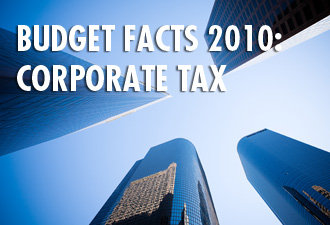Fact Sheet

Pennsylvania Budget Facts 2010: Corporate Taxes
Pennsylvania faces a projected General Fund shortfall of more than $1 billion. Gov. Rendell proposed a $29 billion budget for FY 2010-11 that increases taxes, including extracting more from Pennsylvania corporations. This is the eighth in a series of fact sheets on the Pennsylvania state budget.
Corporate taxes in Pennsylvania
- Pennsylvania collected $1.9 billion from the corporate net income tax inFY 2008-09. This collection is in addition to the property, sales, payroll, gross receipts, and other additional taxes business pay.
- Corporate income taxes cost Pennsylvanians $183 per person, as business taxes are ultimately passed on to consumers and employees, which represents about 2.4% of total state and local government revenues ($7,465 per person) in the state.
- In 2003, the latest year with available data from the Department of Revenue, 71% of corporate filers had no tax liability. This number is deceptive:
- Many of these are corporations that are no longer in operation but have never been legally dissolved.
- The corporate income tax is a levy on profits, and many businesses lose money. Over 53% of corporations filing returns in 2003 lost money.
- This percentage of “non-taxpaying” corporations is similar to the experience in other states.
- The Commonwealth has the second highest state corporate income tax (behind Iowa, which has more generous deductions and exemptions). When compounding state and federal corporate taxes, Pennsylvania’s corporate income tax rate is higher than that of every other country.
Governor Rendell’s proposed business tax changes
- Reducing Pennsylvania’s corporate tax rate from 9.99% to 8.99%.
- Eliminating the cap on Net Operation Loss (NOL) carry-forwards.
- Pennsylvania is one of only two states to cap NOL carry-forward. An un-capped model will reduce the fiscal pressures on cyclical companies, i.e., companies with profits some years and major losses in others.
- Converting to a Single Sales Factor Apportionment.
- Currently, Pennsylvania’s share of a multi-state corporation’s profits is determined by how much of its sales, payroll, and property is in the state. The proposed change means corporations would only use the percentage of their sales in Pennsylvania-not the percentage of their employees or buildings-to determine what they owe to the state.
- Incorporating Mandatory Unitary Combined Reporting (MUCR).
- While reducing the state’s corporate tax rate and eliminating the cap on NOLs would reduce the tax burden, these gains would be outweighed by MUCR.
- Gov. Rendell estimates these changes would result in a $67 million corporate tax increase next year, and $167 million more from corporations the following year.
Mandatory Unitary Combined Reporting
- Mandatory Unitary Combined Reporting (MUCR) treats affiliated businesses (i.e., parents and subsidiaries), engaged in a “unitary business,” as a single group for purposes of determining taxable income.
- Combined reporting is touted as a way to raise revenue for state government.
- Proponents claim that MUCR will close tax loopholes, such as the “Delaware loophole,” and force companies to pay their “fair share” of taxes.
- Supporters also maintain that because other states have implemented combined reporting, Pennsylvania will not be negatively affected.
- MUCR offers no guarantee for additional revenue.
- Through combined reporting, revenue intake can either increase, decrease, or remain unchanged. There is no sure way to predict its effects.
- In Minnesota, MUCR failed to increase revenues in either the “short or intermediate term.”
- Combined reporting will complicate the state’s tax system.
- MUCR requires significant increases in Department of Revenue staff, prolongs audits, appeals, and costly litigation. Due to MUCR, California is still processing tax cases from the 1970s, and GE testified to closing their 1982 California tax return in 2010.
- Combined reporting could discourage further business investment in Pennsylvania.
- A large company with only a small piece of their operation in the state would benefit from closing their Pennsylvania branch to avoid this tax hike.
- Many southern states, who are competing with Pennsylvania to attract businesses, do not utilize combined reporting.
Lower business taxes generate economic growth
- Corporate taxes should be reduced, not hiked. Corporate taxes are passed on to shareholders, to consumers in higher prices, and to workers in the form of lower wages. Indeed, higher state corporate income tax rates result in lower wages.
- Ireland, which cut its corporate income tax rate to the lowest of the OECD nations, saw its economy boom.
- Pennsylvania offers $750 million per year in grants, loans, and tax breaks to attract or retain businesses-ranking the Commonwealth as the 2nd highest state in amount of economic development incentives. A better policy would be to repeal corporate welfare and lower the tax burden on all job creators.
# # #
For more information on the PA State Budget, visit CommonwealthFoundation.org/Budget.